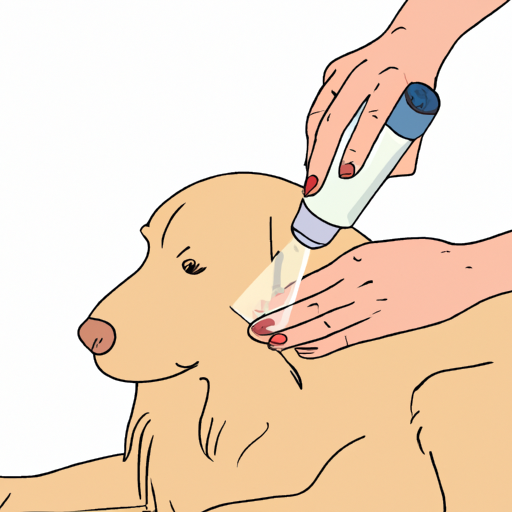Hot spots, also known as acute moist dermatitis, are a common skin condition in dogs that can cause significant discomfort and stress. In this article, we will guide you on how to treat your furry friend’s hot spots and provide some tips for preventing these painful skin irritations from recurring.
H2: Understanding Hot Spots
Hot spots in dogs are localized areas of skin inflammation and infection. They often appear as red, inflamed, itchy, and sometimes oozy sores. Dogs commonly chew or scratch at these areas, exacerbating the problem.
Hot spots can occur anywhere on the body and can spread rapidly if not treated promptly. Common causes of hot spots include allergies, insect bites, poor grooming, and underlying health conditions.
H2: Identifying Hot Spots
Before you can treat hot spots, you must first identify them. Look for these signs:
- Red, irritated skin
- Hair loss in the affected area
- Pus or discharge
- Unpleasant odor
If you notice any of these symptoms, it’s crucial to act quickly to alleviate your dog’s discomfort and prevent the hot spot from spreading.
H2: Treating Hot Spots
Here are some steps you can take to treat hot spots on your dog:
-
Trim the Hair Around the Hot Spot: This will allow the area to dry out and make it easier to apply treatment. Use a pair of blunt-end scissors or a hair clipper set to a safe length.
-
Clean the Area: Use a mild antiseptic solution or a skin cleanser designed for dogs to clean the hot spot and surrounding area. Avoid using human products as they may be too harsh for your dog’s skin.
-
Apply a Topical Treatment: Apply an over-the-counter spray or cream that is designed to treat hot spots in dogs. These products typically contain ingredients that can help soothe the skin and reduce inflammation.
-
Prevent Your Dog from Scratching: Consider using an Elizabethan collar (E-collar) or similar device to prevent your dog from scratching the hot spot.
-
Visit the Vet: If the hot spot doesn’t improve within a few days, or if it worsens, make an appointment with your vet. They may prescribe a stronger medication or investigate possible underlying causes.
H2: Preventing Hot Spots
Preventing hot spots is as important as treating them. Here are some tips:
- Regular grooming: This helps remove dead hair and skin, reducing the chance of hot spots.
- Dietary adjustments: Some dogs may benefit from a diet that supports healthy skin and reduces allergic reactions.
- Flea and tick prevention: Regular use of flea and tick preventatives can help reduce the likelihood of hot spots.
H2: Frequently Asked Questions
Q: Can I use human medicine to treat my dog’s hot spots?
A: No. Human medicines may not be safe or effective for dogs. Always use products that are specifically designed for dogs.
Q: How long does it take for a hot spot to heal?
A: With proper treatment, most hot spots will begin to improve within a few days and should heal completely within a week or two.
Q: Can hot spots spread to other dogs?
A: No. Hot spots are not contagious to other dogs, but the underlying cause (such as fleas) may be.
Q: Should I take my dog to the vet for a hot spot?
A: If the hot spot is large, painful, or doesn’t improve with home treatment, it’s a good idea to consult your vet.
Remember, as a caregiver, your dog depends on you for their health and wellbeing. Stay vigilant, act promptly, and always consult a professional when in doubt.



